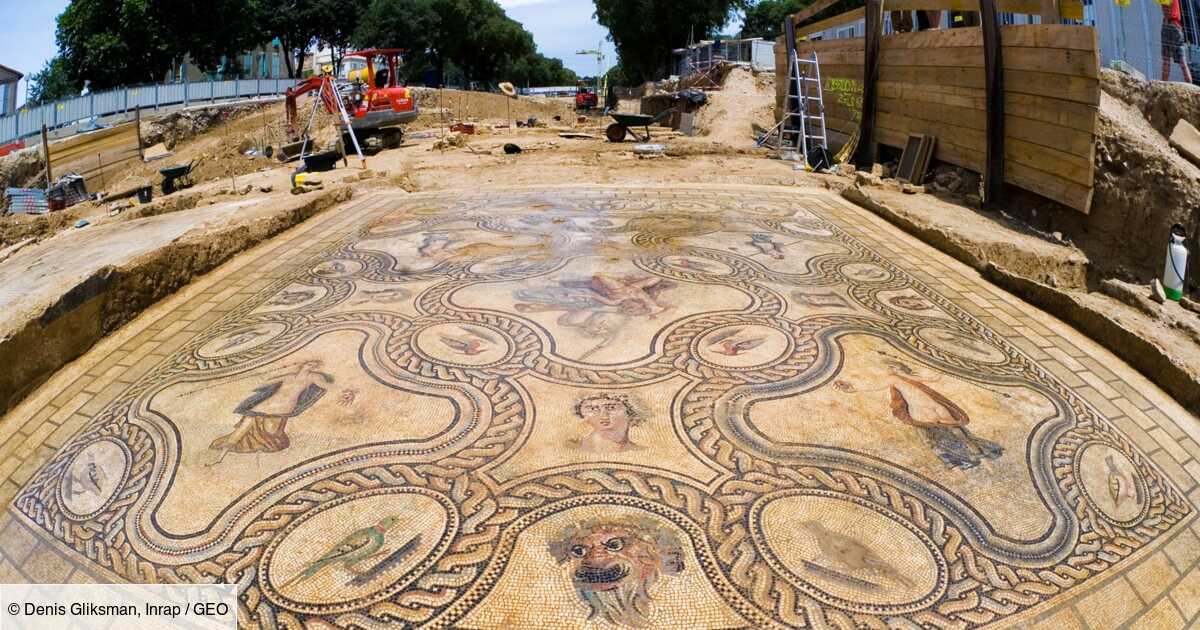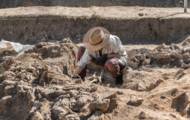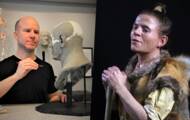“Before, the archaeologists ran behind the diggers; now, they run in front”. In twenty years, preventive archeology has brought about a small revolution. A revolution that has brought to light a considerable number of vestiges whose existence was unsuspected and which could have sunk definitively into oblivion.
This discipline consists of carrying out excavations on sites concerned by work related to land use planning. In France, it is the National Institute for Preventive Archaeological Research (Inrap) which is in charge of this task and it celebrated its 20th anniversary on February 1st.
⋙ Preventive archaeology: 20 years of excavations that have dusted off History
In two decades, the institution has taken part in nearly 50,000 archaeological operations, including 5,000 excavations in metropolitan and overseas France. Through these activities,it is the whole of French territory which has been transformed into an archaeological site“, rejoiced Dominique Garcia, president of Inrap during a press conference held last February.
IN IMAGES, IN PICTURES Inrap is 20 years old: 10 of the most beautiful discoveries made by archaeologists
–
Of these thousands of sites diagnosed, some have revealed unexpected archives that have greatly deepened and even sometimes upset knowledge of the past of our territory, from the Paleolithic to the 20th century. Here are ten examples explored over the past twenty years by Inrap teams.
1 – 200,000-year-old human fossils in Tourville-la-Rivière
In Tourville-la-Rivière, in Seine-Maritime, Inrap archaeologists have revealed an exceptional discovery in 2014 : they unearthed human remains dating back to the Middle Pleistocene, more exactly to some 200,000 years. The inventory includes three long bones from the left arm belonging to a pre-Neanderthal known as “Tourville Man” whose sex could not be determined. Previous excavations at the site had already revealed traces of occupation, including elaborate tools used to cut and remove animal meat.
2 – A remarkable Etruscan tomb in Corsica
In 2019, it was on private land in Aléria in Haute-Corse that a remarkable find appeared: an Etruscan tomb dated from the end of the 4th century BC. The site had already made it possible to exhume a ancient necropolis as well as a hundred Roman tombs but it had been several decades since any Etruscan vestige had resurfaced on the Isle of Beauty. At the heart of the burial, was a deceased adorned with jewelry and accompanied by prestigious furniture of more than two hundred objects.
⋙ The Etruscan tomb exhumed in Haute-Corse begins to reveal its secrets
3 – Gondola Ghost Cavalry
This discovery announced in 2002 was considered one of the most important of the decade on French territory. It took place on the site of Gondole au Cendre in Puy-de-Dôme where one of the three great Gallic strongholds is located – or town – from Auvergne. After several unsuccessful tests, archaeologists unearthed the remains of eight Gallic horsemen buried with their horses, lined up four by four in two rows. According to the hypotheses, they could have been sacrificed at the death of their king. An unprecedented observation that led to reconsider certain funerary practices from the end of the Iron Age.
4 – 14,000 year old art in Angoulême
14,000 years ago, drawing was already on the rise in Angoulême. As proof, the astonishing work of art unearthed in 2019 during excavations carried out in a prehistoric outdoor habitat in the city of Charente. On a sandstone slab, a horse and four other herbivores have appeared, probably including an aurochs and a deer, accompanied by a geometric decoration. These motifs have been linked to the Late Azilian – 12,000 BCE – a period that until now has been associated more with the production of abstract geometric shapes.
⋙ Excavations reveal “exceptional” 14,000-year-old engravings in Angoulême
5 – A 2,400-year-old princely tomb in Lavau
It is in Lavau in the Aube that French archaeologists ont executed in 2015 a discovery they had been waiting for decades. They unearthed a princely tomb there dating from the beginning of the 5th century BC. The funeral chamber delivered an unparalleled inventory including several bronze objects as well as the remains of their owner. Although his sex could not be confirmed, the deceased was obviously of high social class: he rested next to a two-wheeled chariot and appeared adorned with jewelry including a solid gold torque, gold bracelets and a lignite cuff.
6 – Colorful mythological flowerbeds in Nîmes
The city of Nîmes has a rich ancient past of which it has preserved many vestiges. But traces of this history continue to resurface. In 2007, Inrap archaeologists thus unearthed an entire section of the ancient city of Nemausus in the form of remains of streets, living quarters, fountains or statues. Also on the list of finds are carpet mosaics spanning 36 and 50 square meters and depicting scenes from Greek and Roman mythology. Remains dated from the height of the Roman Empire – between the 2nd and 3rd centuries – and have remained well preserved.
⋙ The arenas of Nîmes or the revival of a 2000-year-old Roman amphitheater
7 – A rare female statuette in Villers-Carbonnel
Archaeological discoveries do not have to be imposing to be exceptional. The proof with the “Lady of Villers-Carbonnel” in the Somme. It is a terracotta statuette of 21 centimeters discovered in 2011 during the excavation of two vast enclosures associated with the Chassean culture, between around 4300 and 3600 BC. Well preserved, the object shows characteristics suggesting a female representation of which only rare examples are known in France for the Middle Neolithic.
8 – The training camp of Louis XIV’s troops
In 2012, excavations brought to light from oblivion Fort Saint-Sébastien located about fifteen kilometers from Saint-Germain-en-Laye in the Yvelines. Built in 1669, this structure served as a siege warfare training site for the troops of the Maison du Roi, the elite soldiers of Louis XIV. With its earthen and wooden fortifications surrounded by deep ditches, it allowed them to simulate a siege and the capture of strongholds. An exceptional witness to the art of war whose history archaeologists have been able to deepen by exploring the archives of the time.
9 – Mesolithic hunting lodges in Paris
The banks of the Seine once served as a land for hunter-gatherers. This was revealed the discovery of the remains of several stops dating back to the Mesolithic period – between 9000 and 5000 BC – at rue Henri Farman in the 15th arrondissement of Paris. The sites, unearthed in 2007, collected chipped flints and animal bone fragments as well as a fragment of a femur and a mandible believed to belong to one or two adult humans. To date, these are the oldest human remains identified in the capital.
10 – Alignments of menhirs at Veyre-Monton
If Morbihan is famous for its alignments of menhirs, it is not only in the west of France that such structures are observed. In 2019, it is in Veyre-Monton in the Puy-de-Dôme that a thirty menhirs have been revealed by Inrap. Up to 1.60 m high, the monoliths form a more or less rectilinear alignment stretching over 150 m, not far from two other sets of blocks arranged in a horseshoe and in a circle. Like some Morbihan monuments, the menhirs were knocked down and pushed into large pits. One of them also appeared sculpted, sporting a crudely anthropomorphic silhouette. This is the first time that such alignments have been brought to light in Auvergne and more widely in the center of France.
>> Discover in pictures these ten archaeological discoveries of Inrap.
Read also :




